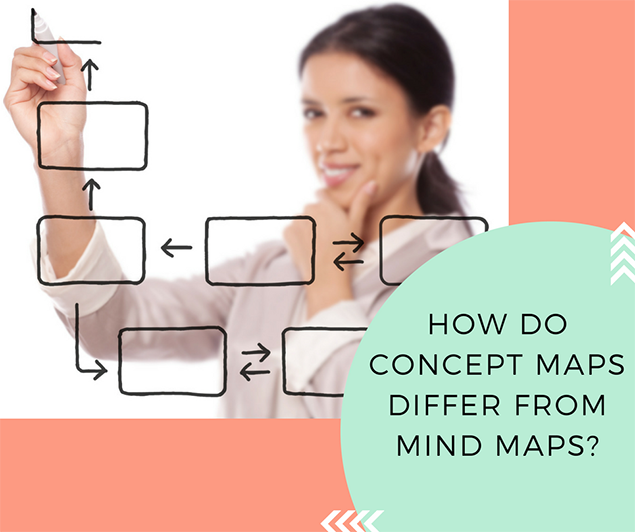Concept Maps Vs. Mind Maps
Posted by Network Support · Leave a Comment
Concept Maps Vs. Mind Maps
It’s easy to confuse concept maps with mind maps. Both are visual mapping tools that represent information visually and simplify learning. The similarities, however, end here. Concept maps differ from mind maps in terms of functioning and structure. It is important to understand these differences as this can help teachers to select and implement the right tool.
Concept Maps Vs. Mind Maps
The key differences between concept maps and mind maps are:
Purpose:
- Developed by Joseph D. Novak, concept maps are used to identify the relationships between concepts, ideas or topics. They explore and provide detailed descriptions of concepts.
- Developed by Tony Buzan, mind maps help generate ideas, breakdown topics into essential components, and help with planning and clarification of information.
Application in the Classroom:
- Concept maps are used to present new topics or concepts and can be used as assessment tools. Concept maps are knowledge representation.
- Mind maps can be used to introduce new topics, link with existing or past knowledge, and to summarize information. Mind maps address the different learning styles and require a balanced application of both logical and creative skills. Students can also use them as note-taking tools using key ideas and images.
Structure:
- Central topic: Concept maps have multiple “parent topics,” whereas mind maps have only one “parent topic.”
- Arrangement: In concept maps, the central concept is represented in a box or node at the top and subsequent sub-concepts are arranged hierarchically downwards. The central themes in mind maps are arranged in the center and sub-topics, contributing or connecting ideas radiate outwards.
- Connections: In concept maps, the sub-concepts are connected using lines with linking words. These linking words describe the relationships (causes, factors) between the sub-concepts or their relationship to the central theme. Concept maps also have cross links symbolizing relationships between the sub-concepts. Mind maps connect the central theme with the intermediary ideas using thick lines. As the distance from the center increases, the lines are thinner.
Audience:
- Mind maps are generally used for personal matters and can therefore be flexible. Being a subjective representation, mind maps provide students with the freedom to develop their own style of writing.
- Concept maps are more formal and may be used as objective representations presented to larger audiences. These maps are more detailed and self-explanatory.
Although concept maps and mind maps look the same at a glance, understanding the finer details separating the two can help teachers in selecting the right tool for their classrooms.
Like this article for teachers?
Browse the Professional Learning Board COURSE CATALOG to find related online courses for teachers in your state. Professional Learning Board is a leading provider of online professional development classes that teachers use to renew a teaching license or renew a teaching certificate.





